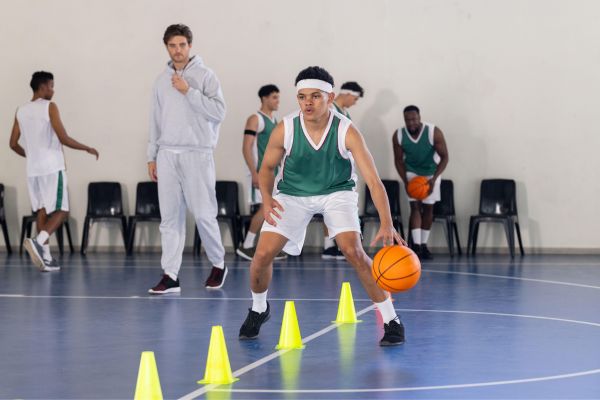In the high-stakes world of athletics, individual talent is often celebrated. However, the true essence of success lies not in solo performances but in how well a group of athletes comes together as a unit. Team dynamics in sports play a pivotal role in determining whether a team achieves greatness or falls short of its potential. By understanding how team members interact, communicate, and collaborate, coaches and athletes can unlock the full power of their collective abilities.
The Importance of Team Dynamics in Sports
Team dynamics in sports encompass the patterns of interaction and relationships among players, coaches, and support staff. These dynamics influence motivation, trust, and ultimately, performance on the field or court. When a team’s dynamic is healthy, athletes are more likely to work toward a shared goal, support one another, and overcome challenges as a cohesive force.
On the other hand, poor team dynamics can lead to miscommunication, conflict, and underperformance. It’s not uncommon for highly talented teams to fail simply because the players could not function effectively together. This underscores why understanding and nurturing positive team dynamics is critical at all levels of sport, from youth leagues to professional competitions.
Communication as the Foundation of Strong Teams
At the heart of every successful team is effective communication. Athletes must not only convey strategies and play calls clearly but also express encouragement and constructive feedback. Open lines of communication foster trust and create an environment where every team member feels valued.
Coaches play a significant role in modeling and facilitating communication. Their ability to listen, adapt, and provide clear instructions often sets the tone for the entire team. When communication flows seamlessly, players are better equipped to respond to changing situations during games and make quick, unified decisions under pressure.
Building Trust and Cohesion Among Athletes
Trust is the invisible glue that binds team members together. Without it, even the most skilled athletes may hesitate, fearing criticism or lack of support from their peers. Developing trust requires consistent effort through shared experiences, both in practice and in competition.
Team-building activities outside of regular training can also strengthen bonds. These experiences encourage athletes to see one another beyond their roles on the field, promoting empathy and understanding. As trust deepens, so does the willingness of players to sacrifice personal glory for the good of the team.
Leadership and Its Influence on Team Dynamics
Leadership, both formal and informal, shapes how a team operates. Coaches are often seen as the primary leaders, setting expectations and driving the team’s vision. However, athletes themselves frequently emerge as influential figures, providing peer-to-peer guidance and support.
A strong leader understands the unique personalities within the team and adapts their approach accordingly. They encourage inclusivity, resolve conflicts swiftly, and inspire confidence during moments of doubt. When leadership aligns with the team’s goals and values, it amplifies the positive dynamics necessary for sustained success.
The Role of Diversity and Individual Differences
Every athlete brings a unique set of skills, experiences, and perspectives. Embracing diversity within a team enhances creativity and problem-solving abilities. Differences in playing styles, cultural backgrounds, and personalities can contribute to a richer, more adaptable unit when managed thoughtfully.
However, diversity can also introduce challenges. Misunderstandings or clashes may arise if differences are not acknowledged and respected. Coaches and players must foster a culture where diversity is seen as a strength, ensuring that everyone feels included and empowered to contribute fully.
Overcoming Challenges in Team Dynamics
No team is immune to challenges. Injuries, losing streaks, or internal disagreements can test the strength of team dynamics. How a team responds to adversity often defines its character.
Resilient teams lean on their established trust and communication channels to navigate tough times. They maintain focus on collective goals and support one another emotionally and physically. Coaches who promote a growth mindset help athletes view challenges as opportunities for development rather than insurmountable obstacles.
The Impact of Team Dynamics on Performance
The influence of team dynamics on athletic performance cannot be overstated. Studies in sports psychology consistently show that teams with strong cohesion outperform those plagued by internal strife, even when individual skill levels are comparable.
When team members are aligned in purpose and supportive of one another, they are more likely to exhibit peak performance under pressure. They recover faster from setbacks, adapt to evolving game scenarios, and maintain morale throughout long seasons.
Conclusion: Harnessing the Power of Team Dynamics in Sports
Team dynamics in sports are not a mere background factor; they are the engine driving collective success. By prioritizing communication, trust, leadership, and inclusivity, teams can create an environment where every athlete thrives. Coaches and players who understand the intricacies of these dynamics position themselves for excellence, regardless of the competition they face.
In the end, it is not just about winning games or trophies. It’s about forging a unit that operates as more than the sum of its parts—a true testament to the power of teamwork in sports.





